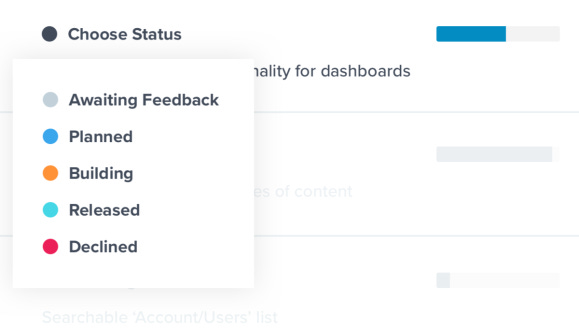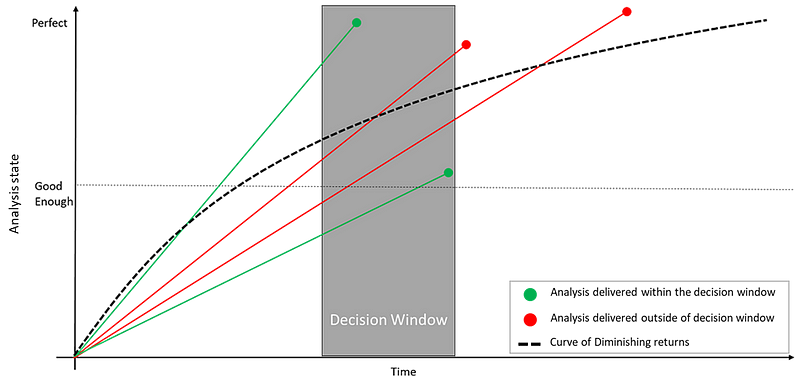Are you missing the window to influence your stakeholders?
Consciously identifying decision windows to maximise your chances to influence decision makers.
I’ve often heard analysts talk about work they’ve done not being actioned, recommendations being ignored or proposed changes falling by the wayside. Most analysts understand what I’m referring to — that, “OK, thanks” moment with no follow-up or the JIRA ticket in the “awaiting feedback” column for weeks on end. Although my experience in this space is largely from an analytics point of view, the general context of this post applies to any role where you might be doing work to influence some outcome.

I used to put this down to stakeholders not understanding the importance of the insights and recommendations. I was wrong! Whilst I don’t think stakeholders are completely void of blame for not taking the work into consideration, I do feel like we need to look at ourselves and accept that our inability to influence outcomes is sometimes a result of our own actions. These could be poor communications, unclear analysis and recommendations, unreliable data or missed decision windows.
The decision window
The last point is what I want discuss as it is often overlooked. The simple truth is, a decision is going to be made whether you provide analysis (or what ever work you do) or not; your ability to influence the outcome depends on your ability to provide the analysis before the decision window closes.
“I met the deadline” I hear you say.
Yes it’s frustrating when you meet the deadline but decision-making processes are not stationary moments in time. People often make decisions gradually and sooner or later than they initially planned as pressures mount, goalposts move or strategies change. So whilst you might have met the deadline, you may have missed the window to influence.
Ensuring the window doesn’t close on you
The graph below highlights two concepts when attempting to influence stakeholders
1) Decision window (Time on the x-axis). You might have a deadline but it’s up to you to continuously validate that deadline. You do this by staying in touch with your stakeholders (via stand ups or 121s) and by providing and requesting regular updates. This is particularly true in Product Development where decision windows are moving targets.
It’s also a good idea to ask for feedback early on. Don’t wait until you’re 100% done before checking in with decision makers. When was the last time you submitted work and got it exactly right? In my experience there’s always feedback. So it’s better to get it when you’re at 50%. At this point you only need course correct slightly. Approach the deadline having done 90% and you may find that you need to make a complete U-turn.
2) End points (Analysis state on the y-axis). There are two critical end points you should be aware of when doing analysis (or any work) that might influence a decision. The first can be established early on. It is the minimum amount you need to do to answer the problem or question. This is the Good Enough state with a mid to high degree of confidence. Figure out what that looks like for your work.
The next critical end point is the Diminishing Returns state. This is the point where the impact or incremental confidence from your analysis reduces for each extra unit of effort. Where this point is can be hard to predict early on. You really need to be mindful of it as you enter the late stages of your work as you might be going down rabbit holes seeking perfect insights or your stakeholders might be sending you down them because they lack decision making skills (analysis paralysis). If you find yourself in this situation, just ask yourself if any additional work will change the outcome of the situation or decision. If the answer is no, then stop.
The risk of decision making
Being a decision maker is not an easy task. At the end of the day, it’s their neck on the line not ours. A good decision maker will take the information that is available to them at the time when a decision is needed and decide the best course forward. Sometimes that might be what we recommended and other times it won’t and that’s ok.
Unless we want the pressures of becoming decision makers ourselves, we have to learn to live with the fact that decision making is a multifaceted problem and there are many things to take into consideration like timing, available information, appetite for risk and other external factors. Our job as analysts is to ensure that the insights we have are available when they are needed. Not a moment after. And although that maximises our chances to influence, it doesn’t guarantee it.
— Bhav
Bhav is the founder of CAUSL, a Product Management and Measurement consultancy. We help our clients connect the dots between the product, the customer and the business. Our consulting services include product analytics, experimentation and implementation. We also provide fractional leadership services in product and analytics. If you need support in any of these areas, please get in touch via the contact form on our website: www.causl.co.uk.





